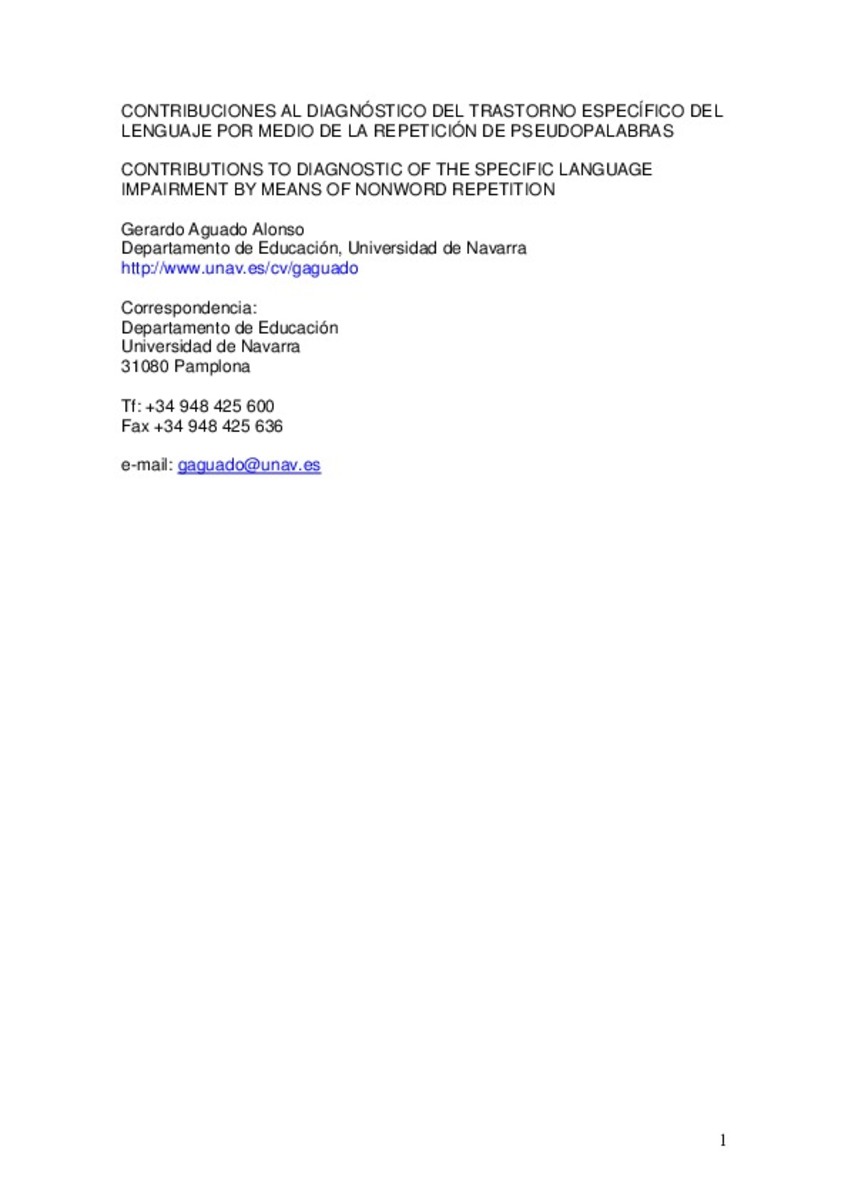Full metadata record
| DC Field | Value | Language |
|---|---|---|
| dc.creator | Aguado-Alonso, G. (Gerardo) | |
| dc.date.accessioned | 2011-11-08T12:27:02Z | - |
| dc.date.available | 2011-11-08T12:27:02Z | - |
| dc.date.created | 2011 | - |
| dc.date.issued | 2011-11-08T12:27:02Z | - |
| dc.identifier.uri | https://hdl.handle.net/10171/19266 | - |
| dc.description.abstract | Se presentan dos listas de pseudopalabras para la evaluación de la memoria fonológica de trabajo para el diagnóstico del trastorno específico del lenguaje. Una lista está constituida por pseudopalabras compuestas de sílabas frecuentes, y la otra por sílabas no frecuentes. Se acompañan de las instrucciones para su administración y de un baremo provisional realizado con niños de 5 y 7 años. La importancia de la tarea de repetición de pseudopalabras para el diagnóstico del trastorno específico del lenguaje se basa, por una parte, en que se ha comprobado que es la mejor forma de medir la capacidad del almacén fonológico de la memoria de trabajo, ya que se deben llevar a cabo tareas de discriminación de la señal acústica, transformación de la secuencia acústico-fonética en sus fonemas constituyentes, codificación de la información acústica en una representación fonológica, mantenimiento del orden de esta representación en la memoria de trabajo, y planificación y ejecución de la respuesta, sin que se pongan en marcha procesos de arriba abajo desde el significado. Y por otra parte, parece comprobado que el origen del trastorno específico del lenguaje está en la limitación de la capacidad del mencionado almacén fonológico que afecta, en primer lugar, a la adquisición de vocabulario, y, en segundo lugar, al desarrollo de la morfosintaxis.------------------Two lists of nonwords are proposed to evaluate the phonological working memory for diagnostic of specific language impairment. One list is made up of nonwords whose syllables are frequent and the other of nonwords whose syllables are not frequent. These lists are accompanied by instructions for their performance and by provisional norms carried out on 5- and 7-year-old children. On one hand, the importance of the task of nonword repetition for diagnostic of specific language impairment is based on works which reliably prove that it is the best tool to measure the capacity of phonological store of working memory, because it is necessary to implement tasks like discriminating the acoustic signal, converting the acoustic-phonetic sequence into phonemes, encoding acoustic information into a phonological representation, keeping the order of this representation in working memory, and planning and implementing the response; and these psycholinguistic activities must be carried out without activating top-down processes from the meaning. On the other hand, it seems proved that the origin of specific language impairment lies in the limitation of capacity of phonological store which affects, firstly, vocabulary acquisition, and, secondly, morphosyntax development. | es_ES |
| dc.language.iso | spa | es_ES |
| dc.subject | Repetición de pseudopalabras | es_ES |
| dc.subject | Memoria de secuencias | es_ES |
| dc.subject | Trastorno específico del lenguaje | es_ES |
| dc.title | Contribuciones al diagnóstico del trastorno específico del lenguaje por medio de la repetición de pseudopalabras | es_ES |
| dc.title.alternative | Contributions to diagnostic of the specific language impairment by means of nonword repetition | es_ES |
| dc.type | Material docente | es_ES |
Files in This Item:
Statistics and impact
Items in Dadun are protected by copyright, with all rights reserved, unless otherwise indicated.






